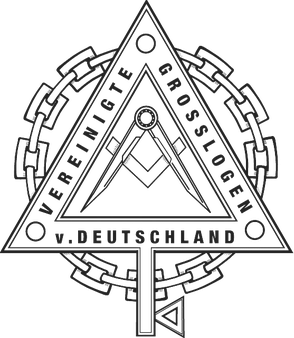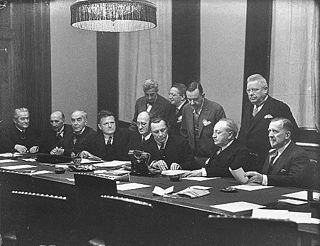
Aby Moritz Warburg, better known as Aby Warburg, was a German art historian and cultural theorist who founded the Kulturwissenschaftliche Bibliothek Warburg, a private library, which was later moved to the Warburg Institute, London. At the heart of his research was the legacy of the classical world, and the transmission of classical representation, in the most varied areas of Western culture through to the Renaissance.

The Schirn Kunsthalle is a Kunsthalle in Frankfurt, Germany, located in the old city between the Römer and the Frankfurt Cathedral. The Schirn exhibits both modern and contemporary art. It is the main venue for temporary art exhibitions in Frankfurt. Exhibitions included retrospectives of Wassily Kandinsky, Marc Chagall, Alberto Giacometti, Bill Viola, and Yves Klein. The Kunsthalle opened in 1986 and is financially supported by the city and the state. Historically, the German term "Schirn" denotes an open-air stall for the sale of goods, and such stalls were located here until the 19th century. The area was destroyed in 1944 during the Second World War and was not redeveloped until the building of the Kunsthalle. As an exhibition venue, the Schirn enjoys national and international renown, which it has attained through independent productions, publications, and exhibition collaborations with museums such as the Centre Pompidou, the Tate Gallery, the Solomon R. Guggenheim Museum, the Hermitage Museum, or the Museum of Modern Art.

NKVD special camps were NKVD-run late and post-World War II internment camps in the Soviet-occupied parts of Germany from May 1945 to January 6, 1950. They were set up by the Soviet Military Administration in Germany (SMAD) and run by the Soviet Ministry of Internal Affairs MVD. On 8 August 1948, the camps were made subordinate to the Gulag. Because the camp inmates were permitted no contact with the outside world, the special camps were also known as silence camps.

Sabine Lepsius was a German portrait painter.
In der Falle: Drei Essays is a book by Nobel Prize-winning author Herta Müller. It was first published in 1996 by Wallstein Verlag. The book consists of essays about the autobiographical poetry of three writers, Theodor Kramer, Ruth Klüger and Inge Müller, who wrote under conditions of dictatorship.

The Liebieghaus is a late 19th-century villa in Frankfurt, Germany. It contains a sculpture museum, the Städtische Galerie Liebieghaus, which is part of the Museumsufer on the Sachsenhausen bank of the River Main. Max Hollein was the director from January 2006 to 2016, followed by Philipp Demandt.

The United Grand Lodges of Germany is an association (confederation) of the five Grand Lodges of Freemasons in Germany which are recognized as regular by the United Grand Lodge of England, and represents them all at an international level.

Blaubär und Blöd is a German children's comedy television series which aired from 14 September 2002 to 17 February 2008. The series is based on the novels by German author Walter Moers.
Christa Reinig was a German poet, fiction and non-fiction writer, and dramatist. She began her career in the Soviet occupation zone which became East Berlin, was banned there, after publishing in West Germany, and moved to the West in 1964, settling in Munich. She was openly lesbian. Her works are marked by black humor, and irony.
Iring Fetscher (1922–2014) was a German political scientist and researcher on Hegel and Marxism.
Susanne Heim is a German political scientist and historian of National Socialism, the Holocaust and international refugee policy.

The Neckar-Odenwald Limes is a collective term for two, very different early sections of the Upper Germanic-Rhaetian Limes, a Roman defensive frontier line that may have been utilised during slightly different periods in history. The Neckar-Odenwald Limes consists of the northern Odenwald Limes (Odenwaldlimes), a cross-country limes with camps, watchtowers and palisades, which linked the River Main with the Neckar, and the adjoining southern Neckar Limes (Neckarlimes), which in earlier research was seen as a typical 'riverine limes', whereby the river replaced the function of the palisade as an approach obstacle. More recent research has thrown a different light on this way of viewing things that means may have to be relativized in future. The resulting research is ongoing.

Luise F. Pusch is a German linguist. She is regarded as the co-founder of feminist linguistics in Germany, along with Senta Trömel-Plötz.
Michael Maaser is a German historian, archivist of the Goethe University Frankfurt.
Karin Orth is a German historian, known for her research into the Nazi concentration camps.
Anke te Heesen (*1965) is a German historian of science and professor for the History of Science at Humboldt-Universität zu Berlin. Her research focuses on the development and organization of knowledge in the 19th and 20th centuries.
Stefan Moses was a German photographer living in Munich.
Georg Ulrich Großmann is a German art historian. He was general director of the Germanisches Nationalmuseum in Nuremberg.

Oskar Loerke was a German poet, prose writer, literary critic and essayist. Loerke was a prominent representative of Expressionism and magic realism in Germany.










